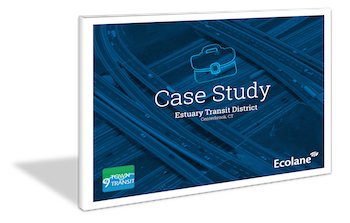Technology in paratransit is reaching critical mass. Remember the days that you had to schedule your trips by hand? Those days are gone. Scheduling by Post-It Note is no longer a good option. More and more people are riding on vehicles driven by fewer drivers, so figuring out how to make a good schedule using a scheduler’s hard-won skill alone is not a sustainable choice. We need to be leveraging technology to make the best use of our skills and resources.
The question an agency has to ask is, what do I want my new software to do for me? Every agency is different and has different priorities:
- Do you just want better, more accurate, and more timely reporting?
- Do you want to leverage your scheduling and dispatch personnel so you can manage more trips?
- Do you want to provide better visibility to your staff so they can serve your customers better?
- Do you want to reduce your call volume?
- Do you want a system that can automatically react and re-optimize with changes in the schedule on the day of service?
Any tool can be a help, but the right tool in skilled hands, used in the right way, for the right job, is invaluable.
Here are five clear trends we’re seeing as people are leveraging software in their transit agency:
1. Customers are booking and managing trips by themselves, leveraging interactive voice response systems and near-universal access to mobile devices.
2. With automated scheduling systems, reservationists are giving clear expectations to customers for pick-up and drop-off windows at the point of reservation, rather than having to call each of them when the manual scheduling is complete.
3. Text messaging and on-the-way calling systems are reminding people of their trips and have them ready when the vehicle arrives, reducing wait times and no-shows.
4. Pre- and post-trip inspections are being done on tablet technology instead of on paper, allowing for better visibility, record keeping, and communication between the office and maintenance staff.
5. Real-time automated dispatch support is allowing for the scheduling system to react quickly to changes in service, making the dispatcher more effective in coordinating and delivering service.
Asking the right questions to procure and configure automated transit software is a big decision that can move your organization to the next level. It can leverage your existing resources and let you focus on gains in other areas of your service.
We’d love to talk with you about your operational challenges and goals. There’s not much we haven’t seen over the years, and we’d love to explore options with you about how to improve your business. Set up a time to talk with us about your biggest issues, and let’s see how Ecolane can work with you to resolve them.
Technology is here to stay and your transit business can definitely benefit from the use of high-quality dispatch and scheduling software. Which type of solution is going to be the best one for you? Contact Ecolane and tell us about your agency’s pain points.
About the Author:
 Kevin Dow is our Project Support Office Administrator. He has a proven record of project management in the public transportation industry and was recruited in 2013 by Ecolane to extend the level of services provided to the company’s client base. His background in education, non-profit agencies, technology procurement, standards, and policies make Kevin a valuable resource to further the objectives of the organization. His responsibilities focus on the evaluation and management of the implementation process for Ecolane, regional and local staff training, identifying added value initiatives, and increasing Ecolane's commitment to providing leading, industry client satisfaction.
Kevin Dow is our Project Support Office Administrator. He has a proven record of project management in the public transportation industry and was recruited in 2013 by Ecolane to extend the level of services provided to the company’s client base. His background in education, non-profit agencies, technology procurement, standards, and policies make Kevin a valuable resource to further the objectives of the organization. His responsibilities focus on the evaluation and management of the implementation process for Ecolane, regional and local staff training, identifying added value initiatives, and increasing Ecolane's commitment to providing leading, industry client satisfaction.
About the Author
Kevin Dow
Read Kevin's blog articles for perspective, opinion and information on transit and paratransit issues.
%20(200%20x%20100%20px).png)

